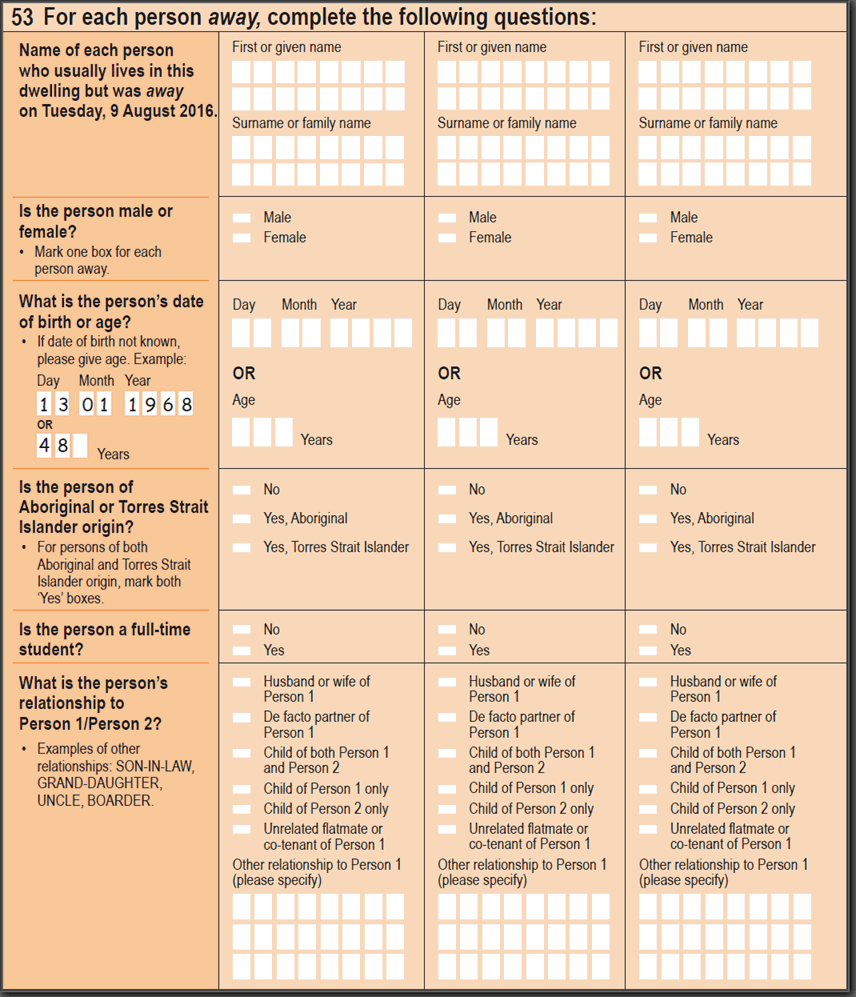Count of Non-Dependent Children Temporarily Absent (CNDAF)
This variable counts the number of non-dependent children reported as temporarily absent from the family on Census night. This variable is applicable to families with non-dependent children, which accounted for 19.2% of all families reported in the 2016 Census. For the applicable population 11.3% of families reported there were non-dependent children temporarily absent from the dwelling on Census night.
How this variable is created
Count of Non-Dependent Children Temporarily Absent is derived from responses from the Persons Temporarily Absent question on the Census Household Form. People are counted as temporarily absent from their family when they are included in the Persons Temporarily Absent question. This variable counts the persons who are identified as being a non-dependent child of the residents in the household. A non-dependent child refers to a natural, adopted, step or foster child of a couple or lone parent usually resident in the household, who is aged 15 years and over and is not a full-time student aged 15-24 years, and who has no identified partner or child of his/her own usually resident in the household.
Variable history
This variable was first introduced in 1996. It replaced a variable called Other offspring temporarily absent (COAF). No changes were made to this variable in 2016.
Non-response rate
Non-response rate only applies to data items that directly reflect responses to individual Census form questions. Count of Non-Dependent Children Temporarily Absent does not have a non-response rate as it is a derived value created during Census processing for applicable families. For more information, refer to Understanding Census data quality.
Data usage notes
People may be missed from the persons temporarily absent section of the form as they are not present in the household when the form is being filled out. This can occur in both family and group households. Additionally due to form limitations a maximum of three people can be reported and coded as temporarily absent from the dwelling. If more than three people are absent from the household the additional persons are unable to be included on the form.
Count of Non-Dependent Children Temporarily Absent should be used carefully when comparing to other family data from within the ABS and for external organisations or agencies. The definition of a family can differ between different statistical collections and may not match Census definitions.
Further information
A definition for Count of Non-Dependent Children Temporarily Absent is available in the 2016 Census Dictionary.
For information on family type and family composition, see the data quality statement for Family Composition.
For information on the Relationship in Household question and data item, see the data quality statement for Relationship in Household.
For more information on Persons Temporarily Absent, see the Census Dictionary glossary entry.
Household form question image
Question 53 on the 2016 Census Household Paper Form:

A text only version of the online Census Household form is available from the Downloads tab.
 Print Page
Print Page
 Print All
Print All